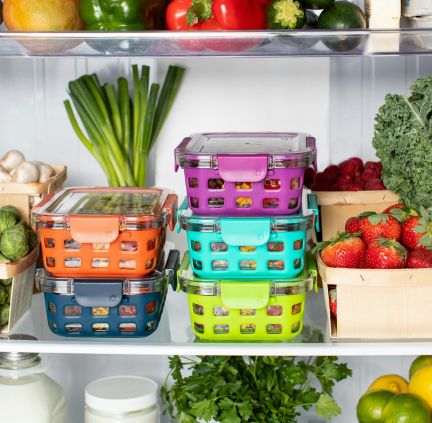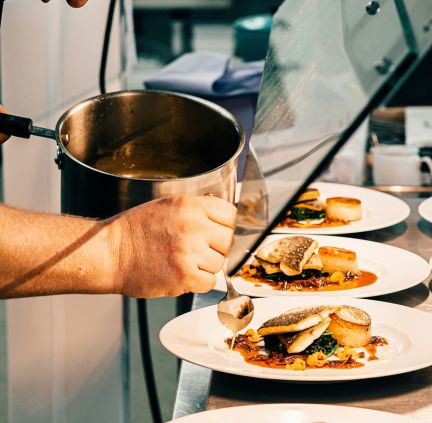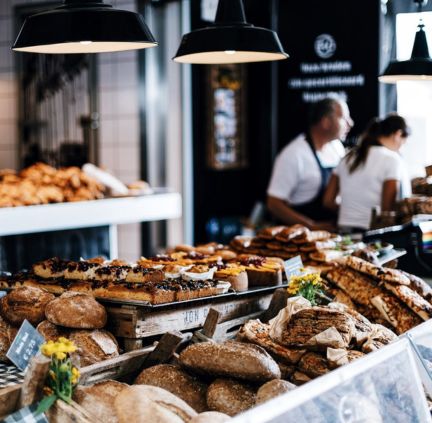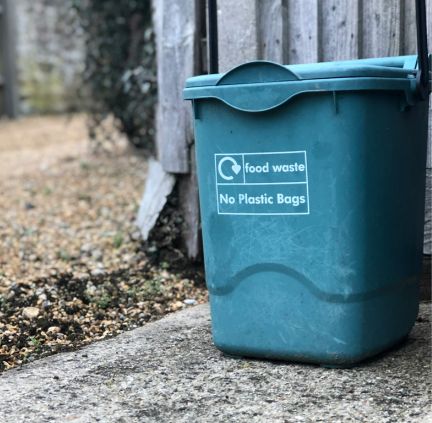
Objective Zero waste: How to reduce food waste in restaurants?
In today's global context, the issue of food waste has become an importante concern, with approximately one-third of all food produced for human consumption being lost or wasted worldwide1. While households historically contributed the largest share of food waste, accounting for 61% in 2021 according to the UNEP Food Waste Index, the food service sector also plays a significant role, responsible for 26% of total waste generation.
Furthermore, with a rebound in eco-conscious consumerism, evidenced by a rise in the percentage of eco-conscious shoppers to 22% in 2023 compared to 18% in 20222 , there is a growing expectation for restaurants and retail establishments to prioritize sustainability.
As at least 65% of consumers express a desire for healthier and more sustainable lifestyles through better spending choices3, the demand for environmentally friendly practices extends beyond the home and into eating-out experiences. With over half of consumers emphasizing the importance of sustainability in food service and retail sectors, the imperative to reduce food waste and adopt sustainable practices has never been clearer. In this article, we explore strategies and solutions for restaurants to minimize food waste and embrace sustainability in their operations.
What causes food waste in restaurants?
There are many factors that play a role in the amount of food wasted in restaurants, and here are 3 main reasons you should be aware of.
1. Over-buying and inadequate storage management
Buying more ingredients than needed is another factor that contributes to food waste. This often happens when restaurants fail to predict demand with accuracy, resulting in overstocks of perishable products. Seasonal fluctuations, special events, and changes in customer preferences can complicate demand prediction. In the absence of accurate inventory management practices and a strong understanding of consumption habits, restaurants end up with excess stock that goes bad before it can be used, contributing to waste.
2. Over-preparation and Excess Production
One of the main causes of food waste in restaurants is over-preparation of food. In an attempt to quickly satisfy customer demand and ensure the availability of a large variety of dishes, chefs and kitchen staff frequently prepare quantities of food in excess. This practice, while purposely intended to improve customer satisfaction and reduce wait, often results in significant amounts of uneaten food. Especially in the case of food that cannot be re-used or be reused the next day for safety and quality reasons, this excess becomes waste.
3. Lack of appropriate planning
Effective planning is very important to minimize food waste. Lack of proper planning involves several areas, such as menu design, portion control and staff training. For example, menus with many options may require more ingredients, which increases the chances of waste. In the same way, serving portions that are too generous for the customer may result in unfinished dishes being thrown away. In addition, the lack of training of staff in waste reduction practices and efficient use of ingredients makes this problem even worse.
Effects of Restaurant Food Waste
The detrimental effects of restaurant food waste are manifold, encompassing both environmental and economic domains. On the environmental front, discarded food ends up in landfills, where it decomposes and produces methane, a potent greenhouse gas contributing to global warming, or it goes to incineration, which has an impact on emissions and requires a lot of energy. The environmental impact is further compounded by the waste of resources involved in producing, transporting, and storing the food that is never eaten.
Moreover, the economic consequences cannot be overlooked. Food waste represents a direct financial loss for restaurants. Beyond the immediate cost of wasted food items, there are hidden costs associated with waste collection and disposal, energy use, and lost opportunity for feeding those in need. The restaurant industry has the potential to play a significant role in addressing global issues like hunger and food insecurity by effectively managing and reducing food waste.
How to avoid food waste in restaurants?
Adopting new sustainability practices may seem difficult, but it is essential to the long-term success and environmental responsibility of any foodservice establishment, from bakeries and cafeterias to hotels. The problem of food waste is generalized across the food industry and contributes significantly to both economic losses and environmental damage. Millions of tons of food are wasted every year, affecting food security and accelerating climate change. To guide you in this important task, we offer you various strategies that can be easily integrated into the operations of any foodservice business. These tips are not just about reducing waste, but are a little step towards a more sustainable and profitable future. Adopt these changes, and let's make a difference for our planet.
Ways to reduce food waste in restaurants: 6 key tips to apply


1. Use FIFO (First In, First Out)
This method is key to effective inventory management, ensuring that older stock is used before newer stock. Organize your pantry, refrigerator and freezer so that older stock is at the front and easily accessible. It is important to label the items. For example, if you prepare and cut some carrots for garnish, be sure to label them with the date they were processed. This simple labeling practice ensures that you always know the freshness of your ingredients.


2. Staff Training
Training staff on waste management practices is another key aspect. Staff should be aware of the importance of minimizing waste and trained in practices such as proper food storage and efficient use of leftovers. A well-trained and waste-conscious staff can play a key role in reducing waste.


3. Menu flexibility
Customers appreciate variety, so take the opportunity to innovate with your menu. Instead of ordering more stock, focus on using the ingredients already available in your kitchen. Consider offering different lunch and dinner menus to make the most of the day's produce, which will allow you to use ingredients efficiently and keep your offerings fresh and attractive. By strategically planning your menus based on what you need to use, you will not only minimize waste, but also adapt to the changing tastes of your customers.


4. Final customer's promotions: How do restaurants deal with leftover food?
What to do with your products at the end of the day? One effective strategy is to surprise your last customers with promotions. For example, consider offering a 50% discount or a "buy two get one for free" offer on products or dishes that need to be consumed quickly. These promotions can encourage customers to buy more, which helps prevent your dishes from going to waste. Cherry on the cake, this approach can also boost your sales during off-peak hours, benefiting both your restaurant and your customers.


5. Donate leftovers or join an app against food waste
Embrace a proactive role in reducing food waste by partnering with organizations and apps dedicated to saving unsold food. These initiatives can increase the sustainability profile of your business and attract customers who value sustainable practices. Implementing these practices demonstrates your commitment to environmental protection and community support, and reinforces your company's role as a responsible entity in the foodservice industry. It's also an opportunity to raise the profile of your restaurant or coffee shop and introduce it to new customers.


6. Compost food waste
For inevitable food waste, such as vegetable peel, composting is a sustainable method of disposal that can significantly reduce your environmental footprint. If composting is not possible, look for local composting services or facilities that can process your organic waste into nutrient-rich soil.
Incorporating leftovers into new dishes
With growing awareness of food waste, explore innovative ways to use leftover food in delicious recipes. Whether it's turning vegetable peelings into a tasty broth or reusing stale bread to make a decadent pudding, the possibilities for creating delicious dishes while minimizing waste are endless.
Posts about waste-free recipes have seen a significant increase online this year compared to 2022, and interactions with these posts continue to rise, indicating a growing affinity among consumers for sustainable culinary practices (Délifrance x Ipsos synthesio social listening).
Check out our recipes for inspiration.


Apple Chestnut cakes
Transform leftover bread into muffins with our apple and chestnut muffin recipe. This zero-waste recipe is sustainable, versatile and creative, the result of conscious cooking. Perfect for coffee shops, restaurants or any food establishment looking to reuse leftover bread. Ready in just 20 minutes, these muffins are an ideal addition to your fall menu, that pairs nicely with a hot beverage. This recipe is adaptable, you can use the bread of your choice.


Revisited brownie
Discover this creative baking adventure and discover how leftover pains au chocolat can be the secret ingredient in your new favorite brownie. Not only does this approach support the zero-waste philosophy, but it also turns a classic treat into a gourmet experience. Perfect for anyone who wants to impress with minimal effort, these brownies take just 15 minutes to prepare. This recipe promises a rich and flavorful dessert that's as respectful of the planet as it is of your palate.


Chocolate chunk cookies
Embrace sustainability with this chocolate chip cookie recipe, a tasty twist on a classic favorite using stale croissants. This recipe offers a solution to food waste. In just 20 minutes of preparation, transform stale croissants into a gourmet treat that combines the buttery layers of croissants with the sweet, rich explosion of chocolate chips. Perfect for an eco-conscious restaurant, bakery or coffee shop.
More creative conscious recipes ideas
In the journey to a more sustainable future, every little action counts. Embrace the philosophy of zero-waste with our recipes designed to transform food waste into delicious treats. These are creative and ingenious recipes that can inspire conscious cooking. Join us in reducing food waste, one dish at a time, proving that sustainability can go hand in hand with delicious flavors.









